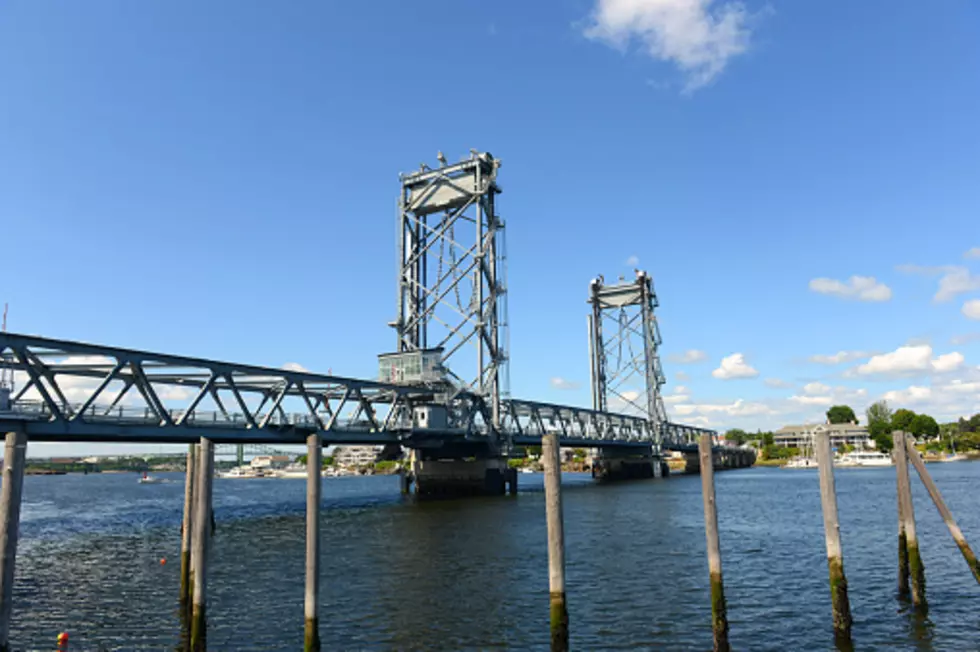
NH Fish and Game: Help Protect Endangered Piping Plovers
There are a record-setting 13 pairs of piping plovers nesting along the sandy shores of Hampton and Seabrook and officials are reminding people that these birds are endangered and should not be approached by humans or domestic animals.
Piping plovers are endangered in New Hampshire and threatened nationally according to Brendan Clifford, a biologist with NH Fish and Game’s Nongame and Endangered Wildlife Program. They oversee the piping plover protection efforts.
"Our goal is to protect these rare birds during their breeding season and manage the beaches for both people and wildlife," Clifford said in a statement.
The photo above is of a male piping plover performing a courtship routine for a female.
Clifford expects that the first nests will hatch in early June.
Clifford says that within just a few hours of hatching, piping plover chicks are able to walk and feed on their own, but the first few weeks of life are critical because the chicks are small and hard to see.
Seagulls, crows, foxes and domestic animals such as cats and dogs are predators to the chicks.
Even if a dog would not harm a chick intentionally, running through their nesting grounds could potentially harm the piping plovers.
Clifford said the birds are typically able to fly at 25 to 30 days and are considered fledged at that point in time.
There are fences put up around the nesting areas and Clifford reminds people to not vandalize them.
Fun Facts Supplied by Fish and Game
From 1997, when protection efforts began in New Hampshire, through 2020, 145 nesting pairs of plovers have fledged 184 chicks on the state’s seacoast. New Hampshire’s efforts are part of a region-wide protection program.
Overall, the Atlantic coast population of piping plovers is currently indexed at slightly below 2,000 pairs.
Thanks to the dedicated conservation efforts of many partners and the cooperation of beachgoers, the piping plover has more than doubled its population along the Atlantic Coast since it was listed as threatened under the Endangered Species Act in 1986. Decades of efforts by federal, state, town, and private landowners, organizations, and agencies at all levels of government have contributed to significant progress in providing plovers with safe places to raise their families.
Beachgoers can make a big difference in whether or not piping plover chicks survive to fledgling age. Here’s how you can help:
- Watch where you step – A plover chick’s defense mechanism is to freeze when people get close, which makes it difficult to see. The chicks are about the size of a cotton ball and light colored, so they blend in with the sand.
- Leash your dog – Free-running dogs can accidentally step on and crush eggs and chase after the chicks and adult plovers. Hampton Beach State Park and the Town of Seabrook both have restrictions regarding dogs on beaches during the summer. People should check before bringing their dog on any public beach.
- Fill in holes – Holes in the sand are traps for the tiny chicks which can’t fly. Filling in any holes on the beach helps the chicks move about and find the food they need to grow strong and be able to fly.
- Volunteer – Volunteers will be needed to help with monitoring once the plover chicks begin to hatch in early June. Anyone interested in volunteering can contact Brendan Clifford of the NH Fish and Game Department at 603-271-0463.
Contact Managing News Editor Kimberley Haas at Kimberley.Haas@townsquaremedia.com.
5 Animals That Are No Longer Found In Maine
More From 97.5 WOKQ






